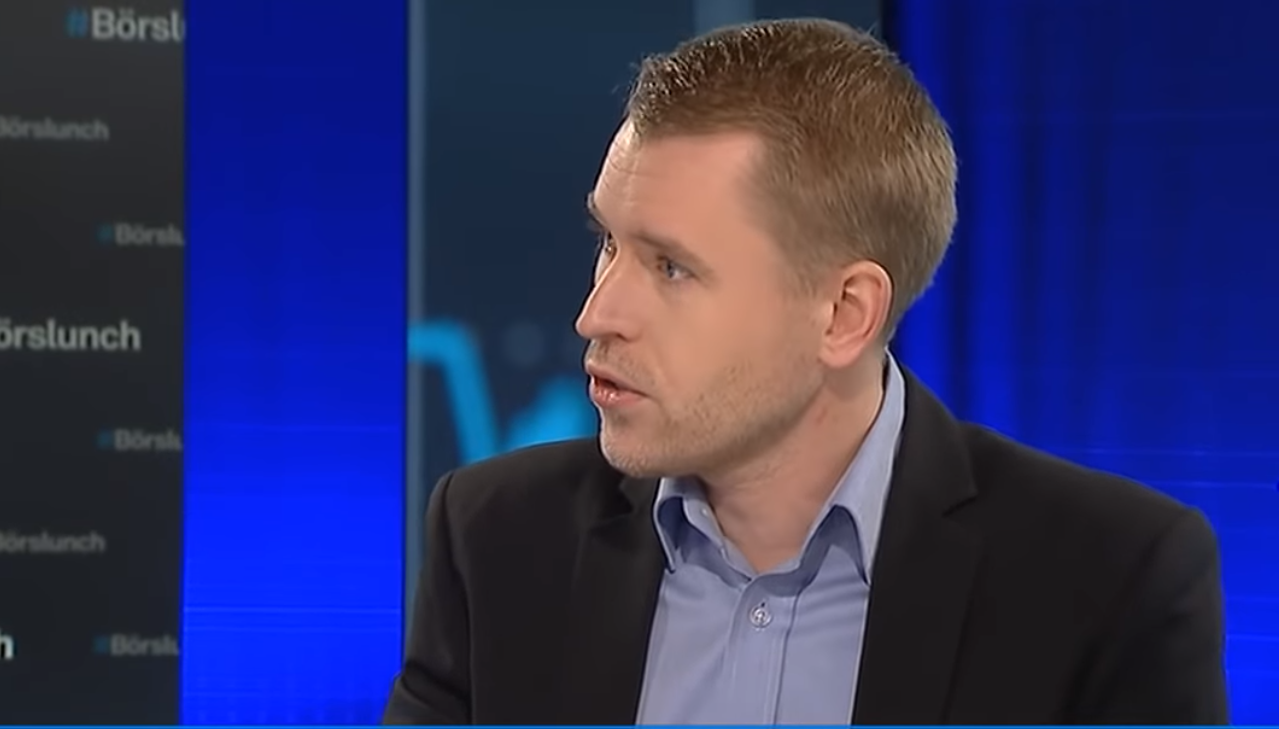Analys från DailyFX
DAX: Stall and Fall from Here? Keep an Eye on the U.S. Market
What’s inside:
- DAX rejected on breakout above resistance
- U.S. markets may be ready to make a break for it, this will exert its influence on global markets
- Technical details laid out for both bearish and bullish scenarios
To receive Paul’s analysis directly to your inbox, please sign up here.
On Monday, the DAX turned up from noted support in the 10400s and attempted to push firmly above an upper parallel running back to August. The attempt was unsuccessful as the market came close to the 9/22 high and reversed about 125 points, resulting in a bearish key reversal day.
The U.S. markets entering into the equation in afternoon trade helped bully the DAX lower. For those who have been reading regularly, we have had our eye on the SP 500 for indication as to which way markets may want to move globally. Yesterday, the SP took its first steps towards breaking free of the narrowing trading range it had been stuck in for weeks. The break lower, however, brings an important trend-line off the Feb 11 low into play. Immediately. Will it hold or fold? U.S. markets have been the strongest for a while now, so how things play out here will be an important determinant in the direction of global markets moving forward.
Getting back to the DAX…
The index is becoming ‘boxed in’, ‘wedged up’, or whatever you want to call it; between the rising trend-line off the June lows and the upper parallel going back to end of summer. There is also good support in the 10440/510 area running back as far as September of last year.
The impressive gap-and-trap on 9/30 and the subsequent sideways price action since suggests there is a bid to the market, but the slightly bearish downward trend structure since the middle of August (lower highs/lower lows) tells us the market could stall and fall from here. If US markets, which have been the strongest, begin cracking lower, then the DAX should also begin its descent below noted support and continue its bearish sequence of lower highs and lower lows.
But before we run out and start hitting bids, we need to first see that important support zone (10440/510) cleared. It’s support until it isn’t. On the upside, we will want to see a clean break and close above the upper parallel and move above the 9/22 peak at 10705, along with U.S. markets turning back to the upside. At which time, the DAX will still have its work cut out for it, but odds of seeing new 2016 highs will begin increasing markedly.
DAX: Daily
Created with Tradingview
Find out where DailyFX analysts see markets headed in the final quarter of the year. Get our FX, indices, and commodity forecasts right here.
—Written by Paul Robinson, Market Analyst
To receive Paul’s analysis directly via email, please sign up here.
You can follow Paul on Twitter at @PaulRobinonFX.
Analys från DailyFX
EURUSD Weekly Technical Analysis: New Month, More Weakness
What’s inside:
- EURUSD broke the ‘neckline’ of a bearish ‘head-and-shoulders’ pattern, April trend-line
- Resistance in vicinity of 11825/80 likely to keep a lid on further strength
- Targeting the low to mid-11600s with more selling
Confidence is essential to successful trading, see this new guide – ’Building Confidence in Trading’.
Coming into last week we pointed out the likelihood of finally seeing a resolution of the range EURUSD had been stuck in for the past few weeks, and one of the outcomes we made note of as a possibility was for the triggering of a ’head-and-shoulders’ pattern. Indeed, we saw a break of the ’neckline’ along with a drop below the April trend-line. This led to decent selling before a minor bounce took shape during the latter part of last week.
Looking ahead to next week the euro is set up for further losses as the path of least resistance has turned lower. Looking to a capper on any further strength there is resistance in the 11825-11880 area (old support becomes new resistance). As long as the euro stays below this area a downward bias will remain firmly intact.
Looking lower towards support eyes will be on the August low at 11662 and the 2016 high of 11616, of which the latter just happens to align almost precisely with the measured move target of the ‘head-and-shoulders’ pattern (determined by subtracting the height of the pattern from the neckline).
Bottom line: Shorts look set to have the upperhand as a fresh month gets underway as long as the euro remains capped by resistance. On weakness, we’ll be watching how the euro responds to a drop into support levels.
For a longer-term outlook on EURUSD, check out the just released Q4 Forecast.
EURUSD: Daily
—Written by Paul Robinson, Market Analyst
You can receive Paul’s analysis directly via email bysigning up here.
You can follow Paul on Twitter at@PaulRobinonFX.
Analys från DailyFX
Euro Bias Mixed Heading into October, Q4’17

Why and how do we use IG Client Sentiment in trading? See our guide and real-time data.
EURUSD: Retail trader data shows 37.3% of traders are net-long with the ratio of traders short to long at 1.68 to 1. In fact, traders have remained net-short since Apr 18 when EURUSD traded near 1.07831; price has moved 9.6% higher since then. The number of traders net-long is 15.4% lower than yesterday and 16.4% higher from last week, while the number of traders net-short is 0.4% higher than yesterday and 10.5% lower from last week.
We typically take a contrarian view to crowd sentiment, and the fact traders are net-short suggests EURUSD prices may continue to rise. Positioning is more net-short than yesterday but less net-short from last week. The combination of current sentiment and recent changes gives us a further mixed EURUSD trading bias.
— Written by Christopher Vecchio, CFA, Senior Currency Strategist
To contact Christopher Vecchio, e-mail cvecchio@dailyfx.com
Follow him on Twitter at @CVecchioFX
To be added to Christopher’s e-mail distribution list, please fill out this form
Analys från DailyFX
British Pound Reversal Potential Persists Heading into New Quarter

Why and how do we use IG Client Sentiment in trading? See our guide and real-time data.
GBPUSD: Retail trader data shows 38.2% of traders are net-long with the ratio of traders short to long at 1.62 to 1. In fact, traders have remained net-short since Sep 05 when GBPUSD traded near 1.29615; price has moved 3.4% higher since then. The number of traders net-long is 0.1% higher than yesterday and 13.4% higher from last week, while the number of traders net-short is 10.6% lower than yesterday and 18.3% lower from last week.
We typically take a contrarian view to crowd sentiment, and the fact traders are net-short suggests GBPUSD prices may continue to rise. Yet traders are less net-short than yesterday and compared with last week. Recent changes in sentiment warn that the current GBPUSD price trend may soon reverse lower despite the fact traders remain net-short.
— Written by Christopher Vecchio, CFA, Senior Currency Strategist
To contact Christopher Vecchio, e-mail cvecchio@dailyfx.com
Follow him on Twitter at @CVecchioFX
To be added to Christopher’s e-mail distribution list, please fill out this form
-
Analys från DailyFX10 år ago
EUR/USD Flirts with Monthly Close Under 30 Year Trendline
-

 Marknadsnyheter2 år ago
Marknadsnyheter2 år agoUpptäck de bästa verktygen för att analysera Bitcoin!
-
Marknadsnyheter5 år ago
BrainCool AB (publ): erhåller bidrag (grant) om 0,9 MSEK från Vinnova för bolagets projekt inom behandling av covid-19 patienter med hög feber
-
Analys från DailyFX12 år ago
Japanese Yen Breakout or Fakeout? ZAR/JPY May Provide the Answer
-

 Marknadsnyheter2 år ago
Marknadsnyheter2 år agoDärför föredrar svenska spelare att spela via mobiltelefonen
-
Analys från DailyFX12 år ago
Price & Time: Key Levels to Watch in the Aftermath of NFP
-
Analys från DailyFX8 år ago
Gold Prices Falter at Resistance: Is the Bullish Run Finished?
-

 Nyheter7 år ago
Nyheter7 år agoTeknisk analys med Martin Hallström och Nils Brobacke











